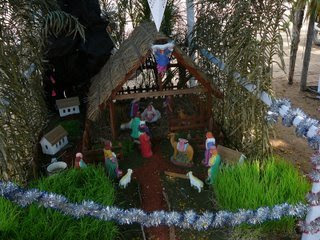Experience Kalarippayatt, the martial art of South India
Oral folklore ascribes the creation of kalari payat to the Hindu gods. It was first documented around the 11th or 12th century AD by the historian Elamkulam Kunjan Pillai, who attributed its creation to an extended period of warfare that took place between the Chera and the Chola dynasties in the 11th century.The art was disseminated through schools known as kalari, which served as centres of learning before the modern educational system was introduced. Still in existence, kalaris served as meeting places for the acquisition of knowledge on various subjects ranging from mathematics, language, astronomy and various theatrical arts.More specifically, martial arts were taught in the payattu kalari, meaning fight school.
Kalari payat became more developed during the 9th century and was practiced by a section of the Hindu community, warrior clan of Kerala, to defend the state and the king. In the 11th and 12th century, Kerala was divided into small principalities that fought one-to-one wars among themselves. These duels or ankam were fought by Chekavar on an ankathattu, a temporary platform, four to six feet high. The right and duty to practice martial arts in the service of a district ruler was most associated with Nairs and Ezhavas. The Lohar of north Kerala were Buddhist warriors who practiced kalaripayattu.The traditional astrologer caste Ganaka / Kaniyar were the teachers of martial arts to young Nairs. Hence they were known as Panickar and Asans.A legendary belief had existed in connection with assignement of this duty to Kaniyar class by Parasuraman in Keralolpathy.
The Mappila Muslims adopted and practiced Kalaripayattu as their own. The ballads of North Kerala refer to Muslims trained in Kalaripayattu. For instance, the hero of the northern ballads Thacholi Othenanbowed before Kunjali Marakkar, the Muslim commander of the Zamorin, and offered him presents before opening his kalari. Some Mappilas were trained in Hindu institutions known as Chekor Kalaris. TheParicha Kali is an adaptation of Kalaripayattu, and the Mappila tradition of this art is called Parichamuttu. The participants typically wear white shirts, green skullcaps, and sing Mappila songs after praying to Allah, Prophet Muhammad and the pirs.
The Saint Thomas Christians also practiced Kalaripayattu and most Christian settlements had a kalari, that was usually run by a Christian panikkar (officer). In the Jornada, it is mentioned that some Christianpanikkars had between 8,000 to 9,000 disciples, who were trained as fighting forces for the local rajahs. One of the most prominent Christian panikkars was Vallikkada Panikkar, whose kalari was located at Peringuzha on the banks of the Muvattupuzha river. He is an ancestor of Bishop Geevarghese Mar Ivanios, one of the founders of the Syro-Malankara Catholic Church.
The writings of early colonial historians like Varthema, Logan and Whiteway shows that kalari payat was widely popular and well established with almost all people in Kerala transcending gender, caste and communal lines. It is said to have eventually become as prevalent as reading and writing. Among some noble families, young girls also received preliminary training up until the onset of menses. It is also known from the vadakkan pattukal ballads that at least a few women of noted Chekavar continued to practise and achieved a high degree of expertise. The most famous of them was Unniyarcha of Keralan folklore, a master with the urumi or flexible sword.
The earliest western account of kalari payat is that of the Portuguese explorer Duarte Barbosa (c. 1518).
The more part of these warriors when they are seven years of age are sent to schools where they are taught many tricks of nimbleness and dexterity; there they teach them to dance and turn about and to twist on the ground, to take royal leaps, and other leaps, and this they learn twice a day as long as they are children, and they become so loose-jointed and supple that they make them turn their bodies contrary to nature; and when they are fully accomplished in this, they teach them to play with the weapon to which they are most inclined, some with bows and arrows, some with poles to become spearmen, but most with swords and bucklers, which is most used among them, and in this fencing they are ever practising. The masters who teach them are called Panikars.
Decline and revival
Kalari payat underwent a period of decline when the Nair warriors lost to the British after the introduction of firearms and especially after the full establishment of British colonial rule in the 19th century. The British eventually banned kalaripayattu and the Nair custom of holding swords so as to prevent rebellion and anti-colonial sentiments. During this time, many Indian martial arts had to be practiced in secret and were often confined to rural areas.
The resurgence of public interest in kalari payat began in the 1920s in Tellicherry as part of a wave of rediscovery of the traditional arts throughout south India and continued through the 1970s surge of general worldwide interest in martial arts. In recent years, efforts have been made to further popularise the art, with it featuring in international and Indian films such as Ondanondu kaladalli (Kannada), Indian (1996), Asoka (2001), The Myth (2005), The Last Legion (2007), and also in the Japanese manga Kenichi: The Mightiest Disciple.




Comments